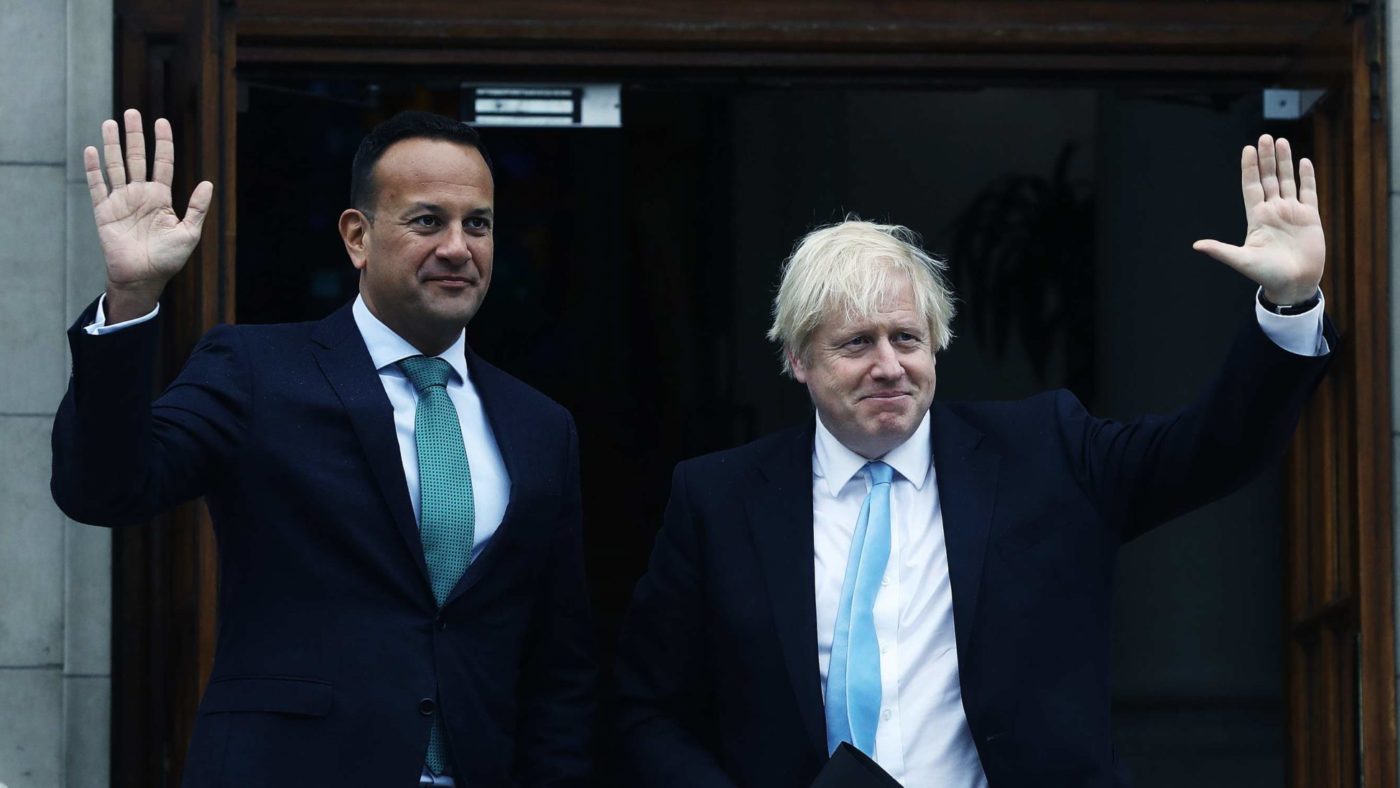Boris Johnson accuses his opponents in the House of Commons of drafting a ‘Surrender Bill’, but the terms he offered the EU this afternoon resemble a partial surrender over the Irish backstop.
The Prime Minister was still huffing and puffing about removing the backstop yesterday, but the plans published this afternoon amount to half a backstop. The DUP is “pleased” with the Government’s scheme, according to the BBC, but the principle that Northern Ireland must leave the EU on close to the same terms as the rest of the UK has been abandoned.
Since he took over from Theresa May, Mr Johnson has insisted that Brussels must drop its demand for an “undemocratic backstop” that threatens to create an internal economic border down the Irish Sea. The alternative plans set out this afternoon envisage a regulatory border between Northern Ireland and Great Britain and a permanent customs border between the Republic of Ireland and the UK.
In effect, the prime minister is asking Brussels to drop its requirement that the province remains in the EU customs union, in return for an undertaking that Northern Ireland will abide by single market rules for at least five years. It’s an old-fashioned, ‘split the difference’ haggle that might work at a market stall, but it’s not a solution when sensitive issues about Ulster’s constitutional future are at stake.
In theory, Northern Ireland would remain aligned to single market rules on agriculture and goods only until 2025. The Stormont Assembly, which has not sat since January 2017, would then decide whether the province continues to follow EU rules or reverts to UK standards. In the absence of a decision, single market alignment would lapse 12 months later, in 2026.
In practice, the Prime Minister has made it clear that he intends Britain to diverge from the single market much quicker than that. Once Northern Ireland’s economy departs from UK regulations, it’s difficult to see how it could quickly and easily make the transition back again in 2026.
Although the government’s letter does not set out the arrangements in detail, the DUP believes that the ‘Stormont lock’ would involve a cross-community vote, meaning that the province would realign with Great Britain by default after four years have elapsed, assuming the Assembly is unable to agree an alternative policy. Whether or not this interpretation is correct, it underestimates the differences that could arise in the interim.
If Northern Ireland is under the political and economic control of the EU until 2026, while the rest of Britain forges an independent trade policy, that situation will become the status quo. It will have practical consequences that weaken the Union and the eventual political convulsion required to reassert British interests in Ulster will be more traumatic.
The plans would mean traders in Great Britain having to fill out extra paperwork to send goods to Northern Ireland. That means that many objections to the backstop – that it is likely to disrupt supply chains, that it could affect the way that national retailers supply outlets here and that it will dissuade small or online businesses from selling in the province – remain relevant.
There’s something for everyone to dislike here. An Irish Sea regulatory border will appal many unionists, while nationalists will oppose a customs border between Northern Ireland and the Republic. During his conference speech, the Prime Minister insisted that checks would not take place at or near the frontier, but the proposals require inspections at traders’ premises or at other locations. With their customary patience and tact, Irish government sources began dismissing Mr Johnson’s document before it had even been submitted.
The EU position is that Northern Ireland must stay aligned to the single market and that it must remain in the customs union. Ministers in Dublin have consistently stated that they will not accept any infrastructure as part of a deal, even if it is located well back from the Irish border. Theresa May tried to get round this objection by tying the whole UK closely to EU customs rules.
Northern Ireland’s business community is likely to be sceptical about Mr Johnson’s alternative plan. The Chief Executive of RetailNI, Glyn Roberts, was one of the first representatives to respond directly, arguing “creating two borders is not a solution – we don’t need any border”.
It’s frequently claimed that, in any negotiation, both sides need to compromise, in order to reach an agreement. Judged by this criterion, the Government’s proposals make a certain amount of sense. Against the much more fundamental doctrine that the EU has no right to drive a political and economic wedge down the middle of the United Kingdom, they are on shakier ground.
Even if the Government’s ‘final offer’ is designed to provoke Brussels into issuing a rejection and bringing about ‘no deal’, as Boris Johnson’s critics allege, it compromises the important principle that Northern Ireland should have the same relationship with the EU as the rest of the UK, after Brexit.
CapX depends on the generosity of its readers. If you value what we do, please consider making a donation.


